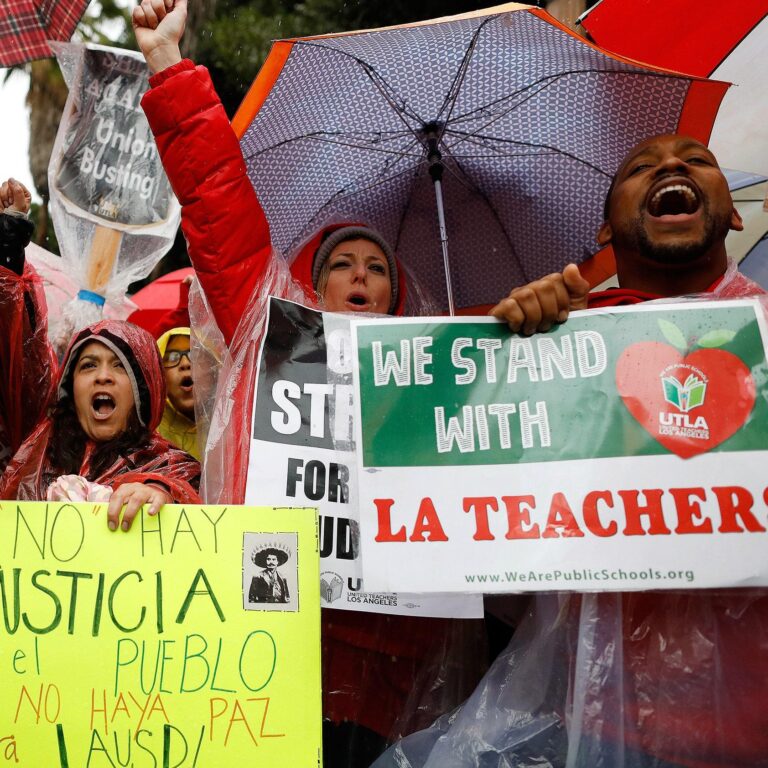Los Angeles Educators’ Strike: A Critical Turning Point in Public Education
Understanding the Los Angeles Teachers’ Strike and Its Consequences for Schools
The recent strike initiated by educators in Los Angeles has spotlighted urgent challenges within one of the nation’s largest school districts.Centered on demands for fair compensation, reduced classroom sizes, and enhanced student support services, this labor action highlights systemic issues that have long affected teachers and school personnel. As the strike continues, public schools face important operational disruptions, compelling families and administrators to quickly adjust to evolving conditions.
- Strike Length: Extending beyond a week, the strike has impacted tens of thousands of students across numerous schools.
- Primary Requests: Increased wages, capped class sizes, and expanded mental health resources.
- Community Reaction: Varied responses from parents,students,and local businesses as they manage the strike’s widespread effects.
| Issue | Teachers’ Proposal | District’s Offer |
|---|---|---|
| Wage Increase | 15% raise phased over three years | 10% raise contingent on budget approval |
| Classroom Size | Limit to 25 students per class | Current average between 30 and 35 students |
| Student Support Services | Immediate hiring of additional counselors and aides | Proposed gradual recruitment plan |
Core Issues Fueling the Strike: What Educators Are Fighting For
The strike centers on several pivotal demands that reflect the realities faced by teachers and students alike. Foremost is the call for smaller class sizes, which educators argue are vital for delivering individualized attention and enhancing academic achievement. Alongside this, teachers seek salary adjustments that align with the escalating cost of living in Los Angeles and the increasing demands of their profession.
Additionally, the shortage of support personnel such as counselors and teaching assistants has stretched educators thin, negatively affecting classroom quality. The strike also emphasizes the necessity for expanded mental health services to support both students and staff, as well as the creation of safe, equitable learning environments that address infrastructural deficiencies and educational disparities.
| Demand | Explanation |
|---|---|
| Reduced Class Sizes | Lower student-to-teacher ratios to foster better learning experiences |
| Competitive Salaries | Increase pay to reflect living costs and professional responsibilities |
| Expanded Support Staff | Recruit more aides and counselors to assist classroom teachers |
| Enhanced Mental Health Resources | Broaden access to counseling and psychological services within schools |
| Safe and Inclusive Facilities | Upgrade school infrastructure and promote equity across campuses |
Impact on Students and Families: Navigating the Challenges
The strike has disrupted the daily routines of countless students, with many schools closing and regular instruction paused. Parents are facing increased pressure to secure alternative childcare and educational arrangements, which has proven especially difficult for single-parent households and families with essential workers.Community organizations have mobilized to provide some relief, but demand far outpaces available support.
Students preparing for critical exams and seniors planning for college admissions are among those most at risk, as the interruption threatens to hinder their academic progress.
Beyond educational delays, families are contending with additional hardships. Many parents report difficulties balancing employment with new caregiving duties, sometimes resulting in lost wages or reduced work hours. Moreover, the suspension of school meal programs has raised concerns about food insecurity for vulnerable children.
- Childcare Struggles: Heightened need for supervision during school hours.
- Academic Interruptions: Delays in curriculum delivery and standardized testing schedules.
- Nutrition Concerns: Disruption of free and reduced-price meal services.
- Economic Pressure: Parents adjusting work commitments to accommodate children.
| Area Affected | Details |
|---|---|
| Childcare Availability | Over 60% of parents report difficulty securing alternative care |
| Academic Progress | Postponed exams impacting graduation timelines |
| Meal Programs | Thousands of students lose access to school-provided meals |
| Parental Employment | Many parents forced to reduce hours or take unpaid leave |
Approaches to Mitigate Disruptions and Support Educators
In response to the ongoing strike,school officials and families are employing diverse strategies to minimize educational interruptions. Remote learning platforms have been expanded, and communication efforts intensified to keep parents informed about updates and available resources. Local nonprofits and community centers have also increased their involvement by offering tutoring and enrichment programs outside customary school hours.
Efforts to support teachers during this difficult period include:
- Financial Support: Fundraising campaigns and donations aimed at alleviating economic hardships for striking educators.
- Mental Health Resources: Access to counseling and peer support groups to sustain teacher well-being.
- Advocacy and Solidarity: Partnerships with unions and community leaders to champion improved working conditions.
| Type of Support | Description | Beneficiaries |
|---|---|---|
| Monetary Aid | Emergency grants and relief funds for teachers | Striking educators |
| Wellness Programs | Counseling services and mental health workshops | Teachers and school staff |
| Community Involvement | Volunteer tutoring and educational activities | Students and families |
Final Thoughts
The Los Angeles teachers’ strike represents a significant moment in the ongoing dialog about education quality, funding, and equity. Its effects ripple through schools, households, and the broader community, underscoring the urgent need for lasting solutions. As negotiations continue, all eyes remain on efforts to reach an agreement that supports educators while safeguarding students’ academic futures. For the latest updates and extensive coverage, stay tuned to USA Today.




